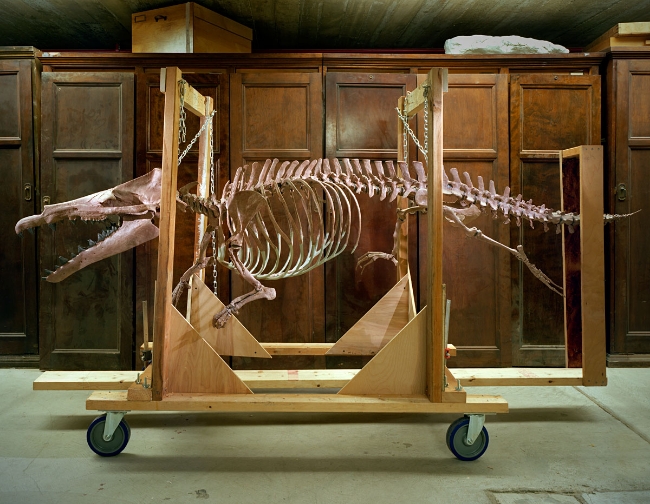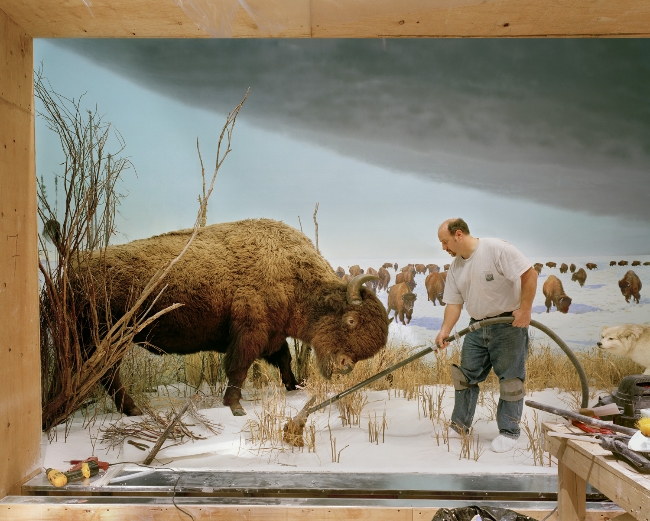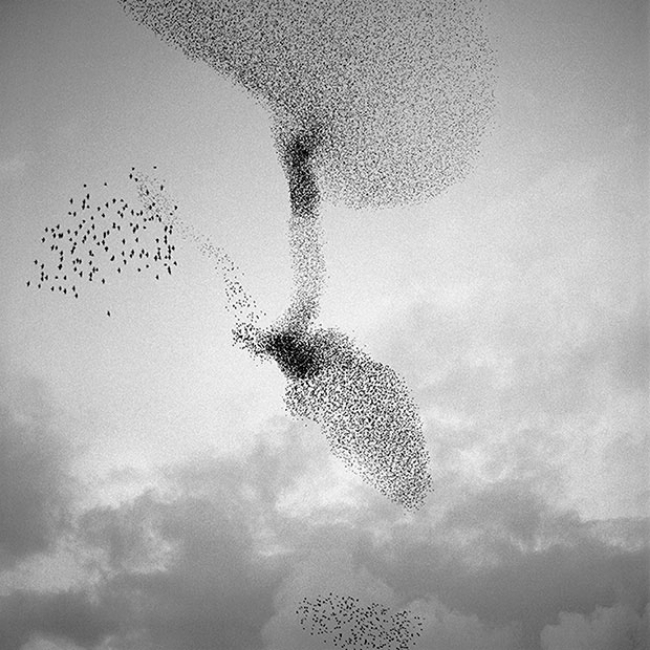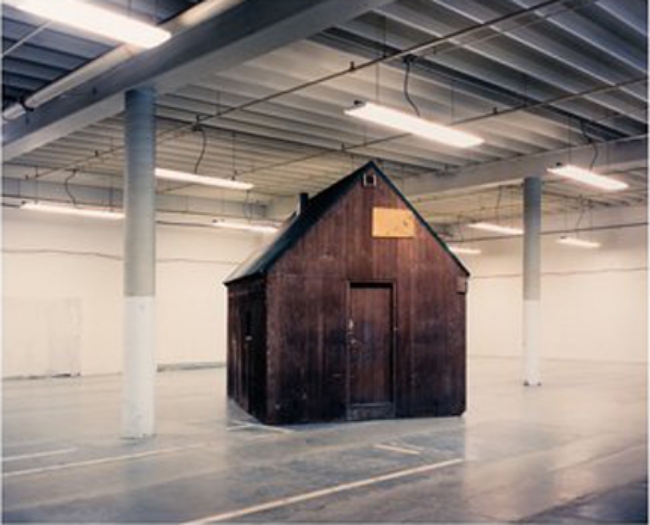Richard Barnes is usually described as an architectural and editorial photographer, which is probably an accurate although limited description of the work he’s actually done. When he was a fine art student at U.C. Berkeley, he wanted to incorporate some photographic elements into his printmaking. Since the Art Department at Berkeley didn’t offer a photography course at the time (mid-1970s), Barnes shifted to the only department that did–the journalism school.
After graduation, he took a job as a staff photographer for the local newspaper. This led eventually to an unusual series of photography jobs. In the early 1990s Barnes was the excavation photographer at an archaeological dig in Abydos, Egypt. This experience sparked an interest in museums and the functions they fulfill.
“After a few field seasons in Egypt, I began to turn my attention to the places where the objects we were extracting from the ground were ultimately interred…. I later became interested in how museum collections develop, specifically in the way they express our relationship to the natural world and our place, or the human presence within it.”
He began to photograph the various museums where he’d established contacts. These were formal, classical architectural photographs of the buildings and the individual rooms. But over time, Barnes began to turn his eye to the elements within the rooms. He photographed the exhibits themselves, using the same cool, formal approach. Rather than photograph the exhibits in their final state, however, he chose to show them as they were being prepared for display. That decision resulted in a series of photos that show, without any irony, the fabricated and artificial essence of all natural history museums. At the same time, however, the photographs are absolutely elegant.

One day he happened on a pair of museum workers who were unpacking specimens to be exhibited in a wildlife diorama, and became intrigued by the concept and history of those dioramas. Barnes, like many artists and writers, is apparently prone to following tangents of thought far beyond their original source. One day he came across a diorama that was being renovated.
“There had been a fire and this particular diorama suffered smoke damage and when I came through I was struck by this bizarre tableau of the animals covered in plastic and these tools spread all around the floor of what was supposed to be the savanna. But what I found most interesting was this man on a scaffold painting the clouds in the sky over the scene. It was this insertion of the living human element in what I had always considered to be the pretty static set piece of the diorama that intrigued me.”

There’s a sort of strange, surreal intimacy to these diorama photographs. They retain the emotional distance of forensic archaeological photography, coupled with the formality of fine art photography, but the inclusion of humans going about their ordinary business makes them seem almost surreal ordinariness. It’s not just a peek behind the curtain, but a peek into a weird sort of unreality.
A lifelike American bison in an attitude of grazing while still contained within a faux environment creates a delicious dichotomy. The museum has used all its skills to depict the bison in the most realistic way possible, to give the museum-goer some sense of the animal’s size and vitality–and yet, in this context, it is so clearly false that the eye is amused at the same time it is being pleased.
While working with a museum in Rome, Barnes witnessed a murmuration of starlings. For centuries, Rome has been plagued by massive flocks of these birds every fall and winter. In ancient Rome, the swirling flocks were used as a form of augury; priests and prognosticators would see in them an expression of the will of the gods. What Barnes saw in these massive, ever-shifting flocks was a sort of living pointillist abstract. He saw raw form and organic structure. In a sense, his murmuration photographs remove the individual birds from the flock, depicting them instead as a single entity, albeit one that is constantly shifting its shape.

Perhaps the most unusual commission Barnes accepted was when he was hired by the New York Times to photograph the cabin of Ted Kaczynski, also known as the Unabomber. Kaczynski was responsible for a series of mail bombs that killed three people and wounded a couple dozen over a period of fifteen years. He lived in a small, hand-built cabin in a remote area of Montana. When Kaczynski was finally caught and arrested, the U.S. government seized his cabin. The entire cabin. It was removed from its foundation and shipped to an FBI storage facility on an Air Force base in Sacramento. It remains there today, an 11×13 foot shack belonging to a madman now condemned to live the rest of his life in an 8×12 foot cell.

This assignment required Barnes to photograph what is essentially a house inside a room. Seeing the cabin in the warehouse, Barnes said “Conceptually, the cabin in this white cube began to take on the aura of a piece of minimalist sculpture or art installation.” Once removed from its original site, the cabin became a sort of fetishized object–an object whose attraction is only tangentially related to its intended purpose. Kaczynski’s cabin squats in that clean, white, empty space like some dark, cancerous, alien toad. It appears almost ominous.
And yet there is also something metaphorical about the photographs of Kaczynski’s cabin. Not only is the Unabomber incarcerated, so is his home. It treats the cabin as if it too were guilty of murder.
“When I isolate an object, take it out of context by erasing the background, etcetera, I usually do it so I can free it from its history and give it a new voice….The ambiguity of scale, space and representation, allows the viewer of my photographs to enter them on their own terms, draw their own conclusions, and then perhaps be surprised when they find out what they are really looking at.”
He was talking specifically about his work with the Unabomber’s cabin, but this notion can apply to just about all of his work. In Barnes’ photography, there is always a bit of surprise awaiting the viewer.
